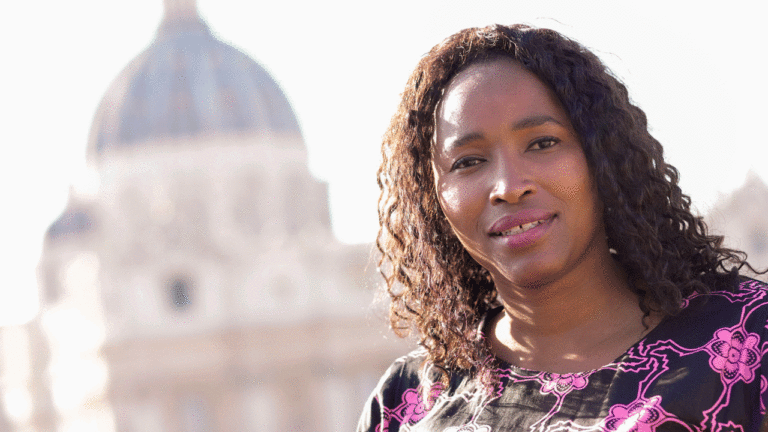Historic Vatican Synod Puts Women at the Center of Church Discussions
VATICAN CITY — In a groundbreaking move, Pope Francis has ushered in a new era for the Catholic Church by placing women at the forefront of a global gathering of bishops and laypeople discussing the church’s future. For the first time, women are taking center stage in discussions about the direction of the church.
Maria Lia Zervino, who was advised by Pope Francis to be “brave” in advocating for change in the church’s treatment of women, seized this opportunity. In 2021, she penned a public letter, highlighting the debt the Catholic Church owed to women and their rightful place at the decision-making table, no longer as mere “ornaments” but as active participants.
This pivotal moment is seen as one of the most significant initiatives Pope Francis has undertaken during his papacy, according to Zervino, who previously collaborated with the pope during their roles in the Argentine bishops’ conference.
Women have long expressed their grievances regarding their status in the church, being excluded from the priesthood and the highest echelons of power despite being the primary contributors to the church’s work. They have shouldered responsibilities such as teaching in Catholic schools, running Catholic hospitals, and passing down the faith to the next generations.
Their demands for a greater role in church governance, including voting rights in Vatican synods, the right to preach at Mass, and even the possibility of ordination as priests, have been ongoing. While some progress has been made with women holding prominent positions in the Vatican and local churches, the church’s leadership remains predominantly male.
This three-week synod, commencing this week, marks a significant step toward a more equitable platform for discussing issues like women in leadership, LGBTQ+ Catholics, and priestly celibacy. It follows an unprecedented two-year outreach effort to gather input from rank-and-file Catholics about their vision for the church’s future.
The potential for this synod, along with a subsequent session next year, to bring about substantial change on previously sensitive topics has sparked hope among women and progressive Catholics. However, it has also raised concerns among conservatives who fear that the process may lead to divisions within the church.
American Cardinal Raymond Burke, a vocal critic of Pope Francis, has warned that the synod and its new vision for the church risk radically altering the church’s traditional teachings and practices.
While the Vatican has previously hosted synods to address specific issues like the church in Africa or the Amazon, this edition is unique in its broad focus on making the church more inclusive and missionary in the 21st century. For the first time, Pope Francis has allowed women and laypeople to participate as voting members alongside bishops.
Of the 464 participants, 365 have voting rights, with 54 of them being women. While the primary aim is consensus-building rather than vote counting, the inclusion of women in the voting process reflects Pope Francis’ vision of the Catholic Church as a community of believers, not just an institution led by clerics.
Sheila Pires, a member of the synod’s communications team, emphasizes that women are at the forefront of the call for change. “I don’t want to use the word revolution,” Pires said. “But women want their voices to be heard, not just towards decision-making, but also during decision-making. Women want to be part of that.”
In 2021, Pope Francis took a significant step by appointing French Sister Nathalie Becquart as undersecretary of the synod’s organizing secretariat, granting her a voting role, a position that had traditionally been held by men.
Becquart has been instrumental in explaining Pope Francis’ vision of an inclusive church that welcomes everyone and supports them. During past synods, women had more limited roles as observers or experts, seated at the back of the audience hall while bishops and cardinals took front-row positions. In this synod, participants will sit together at round tables, fostering more equal discussions.
Outside the synod hall, advocacy groups are organizing events and activities to promote further women’s representation in the church. Discerning Deacons, a group advocating for female deacons, has sent a delegation, and the issue is formally on the synod’s agenda.
Although the possibility of women becoming priests is off the table, women are hopeful that this synod will provide a platform for meaningful discussions and progress. Zervino’s group, the World Union of Catholic Women’s Organizations, conducted a survey revealing a broader demand for female deacons, and this demand is featured in the synod’s working document.
For many, such incremental changes are pivotal steps toward a more inclusive church, especially given the high expectations placed on this synod. As Zervino notes, “For those who think that there’s going to be a ‘before the synod and after,’ I bet they’ll be disillusioned. But if women are smart enough to realize that we’re headed in the right direction, and that these steps are fundamental for the next ones, then I bet we won’t be disillusioned.”

